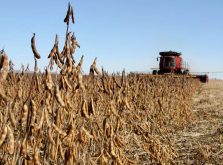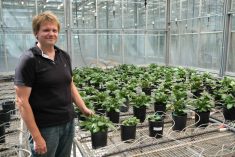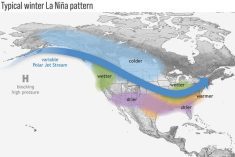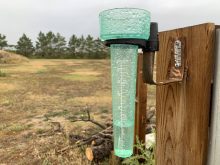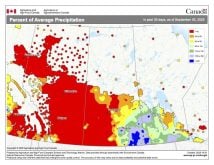Alberta has the dubious distinction of having the most — and biggest — hail in the world. “We’re very famous for that,” said University of Alberta meteorologist Gerhard Reuter.
And you can blame it on the Rocky Mountains, which affect airflows to create ‘hail alley’ — a corridor stretching from Rocky Mountain House to Red Deer.
In winter, air heats up as westerly winds sweep up the face of the Rockies, and that creates chinooks as air falls and flows over the southwest portion of the province. However, in summer, the air also sucks up moisture as it warms. But it does not mix with colder air, creating a warm layer called a ‘cap’ or ‘lid.’
Read Also
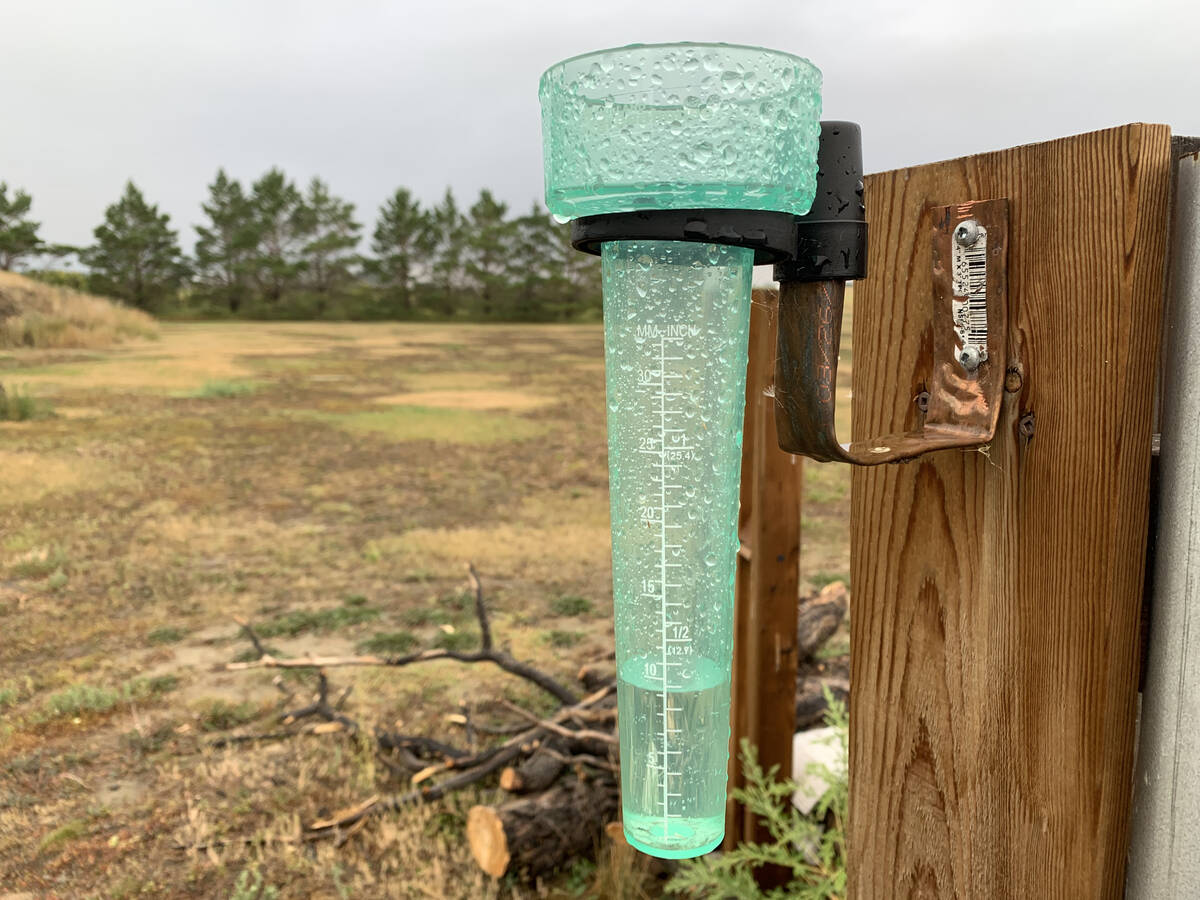
Western B.C., parts of Prairies received drought relief in October
Drought monitor for Western Canada for October
As winds push through this layer, hail is formed.
Reuter estimates, on average, hail falls in some part of the province for 45 days every summer.
- More from the Alberta Farmer Express: Get ready for a lot more major floods
But that number may drop because climate change seems to be resulting in weaker winds, he said.
However, dry spells could be more frequent in some areas.
“Things might become patchy,” said Reuter. “One patch could get too much rain, and another spot could get too little.”
But climate models suggest there’s likely to be more of the latter.
“People don’t predict more precipitation, but if the surface gets warmer, there may be more evaporation, so the soil may become drier,” he said.



